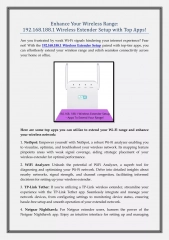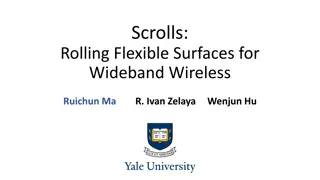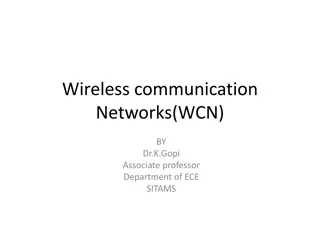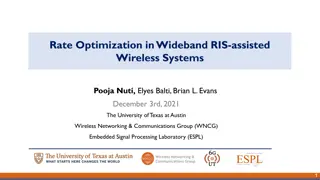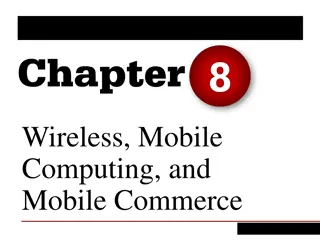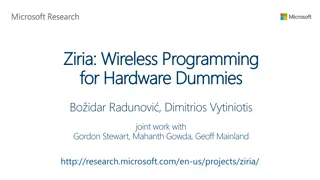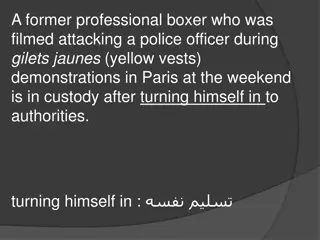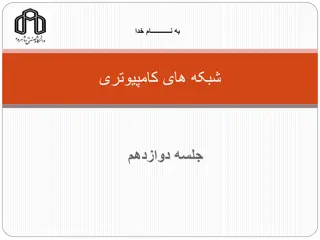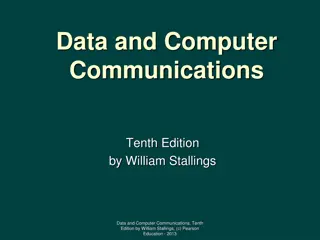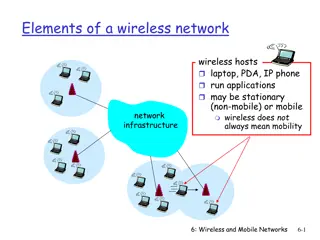Former Wireless Adviser to Government of India
Providing insights into the challenges and solutions related to wireless technology and connectivity, this content delves into the experiences of an esteemed individual who served as a wireless adviser to the Government of India. Through this unique perspective, readers gain a deeper understanding of the intricate workings and considerations within the realm of wireless communications in a governmental context.
Download Presentation

Please find below an Image/Link to download the presentation.
The content on the website is provided AS IS for your information and personal use only. It may not be sold, licensed, or shared on other websites without obtaining consent from the author.If you encounter any issues during the download, it is possible that the publisher has removed the file from their server.
You are allowed to download the files provided on this website for personal or commercial use, subject to the condition that they are used lawfully. All files are the property of their respective owners.
The content on the website is provided AS IS for your information and personal use only. It may not be sold, licensed, or shared on other websites without obtaining consent from the author.
E N D
Presentation Transcript
E & V Band Issues P A W A N G A R G P A W A N G A R G F O R M E R W I R E L E S S A D V I S E R TO G O V T. O F I N D I A ; F O R M E R W I R E L E S S A D V I S E R TO G O V T. O F I N D I A ; F O R M E R C H A I R M A N , R R B , I T U , G E N E VA F O R M E R C H A I R M A N , R R B , I T U , G E N E VA
General Issues (1 of 2) E band (60 90 GHz) and V band (50 75 GHz) are band designations given by Industry. As per ITU terminology, EHF band (30 300 GHz) or Millimetric waves, cover both these bands. Often, E and V bands are talked together. Being close to each other, they are expected to demonstrate similar characteristics. However, presence of Oxygen absorption around 60 GHz, causes attenuation of upto 10 dB/km.
General Issues (2 of 2) Large attenuation due to Oxygen absorption, reduces the propagation distance for these signals drastically. However, this very feature makes these frequencies (band) quite attractive for extensive usage by very short distance links, e.g. wi-fi usage. Hence, it looks appropriate to treat the E and V bands separately for spectrum regulation and pricing. Even TRAI has recommended separate treatment for these frequency bands
TRAI Recommendations (1 of 2) TRAI had made Recommendations for these bands first in August 2014, as part of their Recommendations for Microwave Access and Microwave Backbone carriers; Government of India, Department of Telecom (DoT) had made a reference for some of the Recommendations, including for these bands; TRAI had considered relevant aspects and provided their confirmation / clarifications in October 2015
TRAI Recommendations (2 of 2) TRAI recommended licensing of E band carrier wise, recommending INR 10,000 (US Dollars 150 Approx.) for 2 x 250 MHz (go and return); TRAI has recommended delicensing of V band (57 64 GHz); For other parts TRAI has recommended (2014) carrier wise licensing, recommending INR 1,000 (US Dollars 15 Approx.) for 2 x 50 MHz (go and return); These TRAI Recommendations are learnt to be under active consideration of the Government of India (DoT)
THANK YOU TSDSI 20 OCTOBER 2020 TSDSI 20 OCTOBER 2020 PK.GARG@HOTMAIL.COM PK.GARG@HOTMAIL.COM ; ; GARG.PK48@GMAIL.COM GARG.PK48@GMAIL.COM


